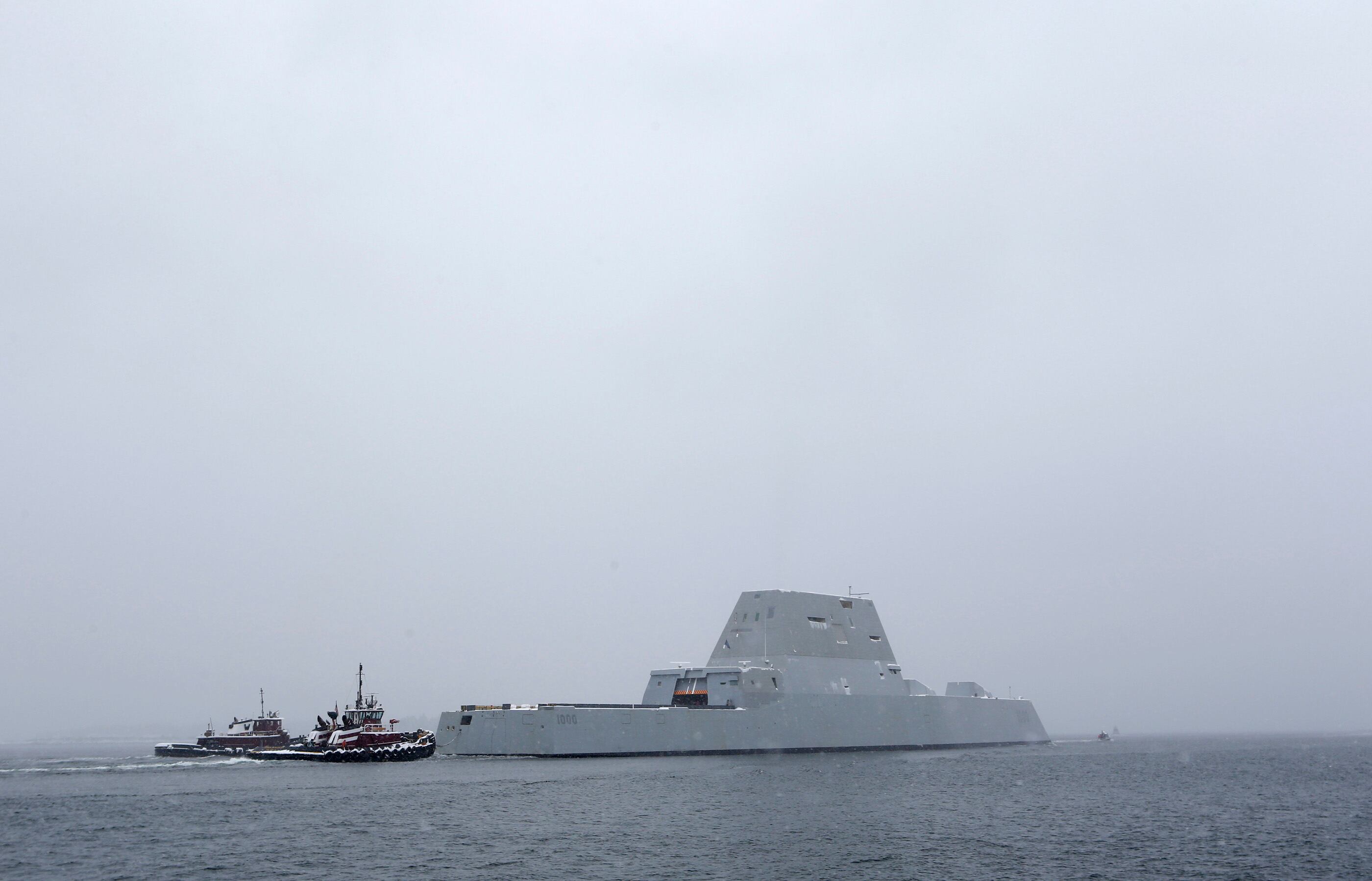WASHINGTON — Bath Iron Works has launched the U.S. Navy’s third and final Zumwalt-class destroyer amid a debate over the future of the ship, which fell victim to its enormous price tag and changing requirements.
The future destroyer Lyndon B. Johnson was launched Dec. 9 at General Dynamics-Bath Iron Works, Maine, which happens when the dry-dock on which the ship rests is flooded until the ship is floating.
The Johnson will be different from its sister ships, the Monsoor and Zumwalt, primarily because of its steel deckhouse instead of the composite material used on the other ships. The move was intended to save money.
RELATED

“It’s important for the DDG 1000 program and shipyard to reach this major milestone,” Capt. Kevin Smith, DDG 1000 program manager at Naval Sea Systems Command, said in a news release. “With the first two ships of the class underway, we are excited to continue the next phase of construction of the future Lyndon B. Johnson.”
The Navy had planned to build 32 of the class but gradually slashed the number to three, which sent the Navy looking for a new mission for the ship. That has led to the current course change for the Zumwalt class, shifting to an anti-surface platform from a ship designed to support amphibious landings with a long-range shore bombardment system known as the Advanced Gun System.
At hearings in April, the Navy’s top requirements officer, Vice Adm. William Merz, told lawmakers that the AGS had become a sticking point that was holding back the development of the platform, which is now slated to become a ship killer.
So, for the time being the Navy is giving up on AGS and focusing on integrating the Standard Missile 6 and potentially other anti-ship missiles to reorient the ship away from the land-attack mission.
David B. Larter was the naval warfare reporter for Defense News.








